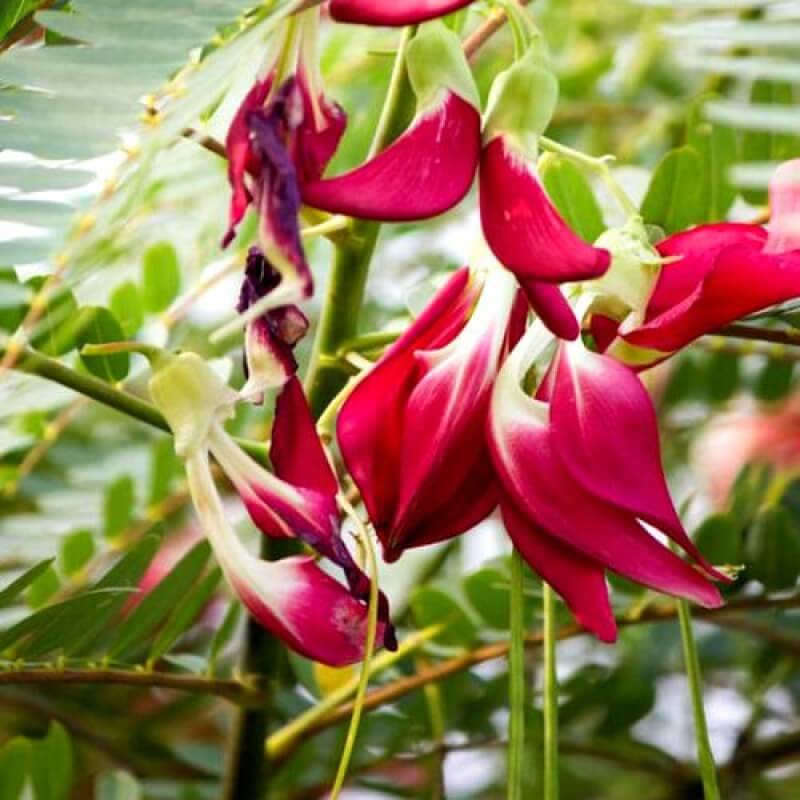- +033 2572 7171
- info@dhanvantary.com

4.5 Rating | 4500 Review

4.5 Rating | 4500 Review
Agastya is fast growing and soft wooded tree grows up to 3-8mt in height. Leaves are regular, deciduous, and abruptly pinnate and rounded about 15-30cm long and has 10-20 leaflets. According to different species this plant bears red and white flowers. Agastya tree flowers are long, has 2-4 flower racemes, shallowly 2 lipped and are boat shaped. Plant bears flowers in month of September and October. Fruit pods re slender, falcate about 30cm long contains 15-30 seeds inside.

Agastya plant is also known as “Agathi” plant in Hindi. All parts of this plant serve some medicinal purpose for us. Like the leaves, pods and flowers are used in cooking for making delicious recipes. The wood of Agastya plant is used for domestic purpose. Its consistency matches that of Bamboo because which it is commonly used as its replacement in furniture making.
The plant is named “Agastya” because its flowers bloom in the Agastya star day of Sharad Ritu (autumn) as per Ayurveda. According to another belief, it was named after “Agathi” a famous seer who practiced Ayurvedic Rasayana procedures in the beautiful abode of Himalayas. It is said that this plant was very dear to him and has since been named after him.
Beautiful flowers of this plant are also used as an offering to Lord Shiva. All in all it has a very soothing effect on the body and is helpful in managing stress and anxiety under control. The juice of this plant can help in purifying Diamond within three days.
It is a native plant of Malaysia and North America. Also found in most humid tropical regions throughout the world. It is also cultivated in India, Indonesia, Myanmar, Philippines and Sri Lanka. Agastya is often cultivated in between rice fields and with guinea grass.
Kingdom
Plantae
Order
Fabales
Family
Fabaceae
English name – Agathi, West Indian Tree, Vegetable Humming bird, Flamingo Bill, White Dragon tree, Swamp pea, Sesban, Tree bean, Large flowered Agato, Brede
Hindi name – Aghastya, Agast, Hathya, Basna, Bakpushpa, Vakrapushpa, Agasi, Chogachi
Sanskrit name – Vangasena, Agasti, Agastya
Bengali name – Olatkaombol, Bak
Tamil name – Sivappututti, Agati
Kannada name – Agase, Agache, Kempagase
Malayalam name – Aagatti, Atti, Akatti
Oriya name – Agastee
Gujarati name – Agathiyo, Ayathio
Pilipino name – Gauai-gauai
French name – Pois valette
Nepali name – Agasti
Sinhala name – Kathuru
Cambodian name – Angkea day
Botanical name – Sesbania grandiflora
| Rasa | Tikta | Taste | Bitter |
| Guna | Laghu, Ruksha | Physical Property | Light, Dry |
| Virya | Sheeta | Potency | Cold |
| Vipaka | Katu | Metabolic Property (After Digestion) | Pungent |
It balances Kapha and Pitta dosha.
| Not mentioned in Charak samhita | Saka varga | Kumbha yoni | Pushpa varga, Saka varga |
The flowers of the plant have a bitter taste and an astringent action on the body. It can be used in intermittent fever, night blindness, rhinitis, running nose, abdominal pain and all kinds of liver and spleen disorders.
It can be used in detoxification of the body, if there is chronic toxicity due to improper dietary patterns over a period of time.
Leaves of Agastya plant have a non – slimy, bitter nature with a hot potency. These are heavy to digest and can effectively balance kapha dosha.
The leaves prove to be helpful in worm infestations and bleeding disorders like menorrhagia and ulcerative colitis. These also possess tonic properties for the body.
Agastya fruits are very helpful in pacifying pitta dosha. It aids in weight loss and helps to manage abdominal tumors. These also help in improving memory and intelligence.
Bark helps to manage IBS symptoms, improves low digestive power and constipation while the flowers help in treating diarrhea.
Roots and bark of the plant are also used for external application over the body.
Juicy extract of the leaves can be used as nasya to relieve kapha predominant disorders of the upper respiratory tract and for epilepsy also.
Leaf paste can be applied to treat oral and throat problems.
Root bark is applied externally to reduce pain and inflammation in arthritis and gout. Paste of red flower Agastya is used in rheumatism.
Leaf juice extract is used in nasya for epileptic sufferers.
Agastya haritaki avleha
It possesses anti – anxiolytic and anti – proliferative properties (against cancer cells in human beings).
Flowers
Leaves
Bark
Tender fruits
Whole plant
Leaf juice: 10 – 20 ml.
Decoction: 50 – 100 ml.
Flower: 5 – 10g.
